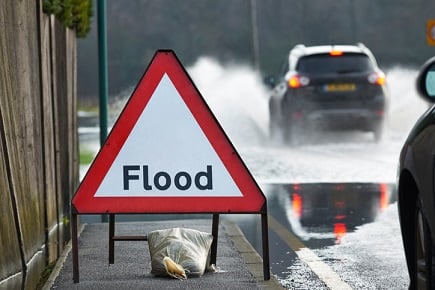If it happens, Jim Eso is ready for the call.
The senior vice president of P&C at Crawford and Company said his team of adjusters are answering phones around the clock now that the most populated region in Canada is under a relatively rare flood warning.
The International Lake Ontario-St. Lawrence River Board has warned that unusually high downpours, coupled with the Great Lake swelling to levels not seen since 1993, could lead to a mandatory evacuation of Toronto Island, as well as flooding in Ottawa and Montreal.
Search and compare for insurance against Overland Flooding from specialty market providers here
Eso said Crawford and Company, the largest public claims management company in the world, was involved in pumping out water from the streets of Montreal in an event a few weeks ago and described how an insurance adjuster would respond if a flooding catastrophe hit today.
“Assuming anything happens, we expect we’ll start getting claims tonight, tomorrow. Our adjusters would normally attend immediately. We have different timeframes but our target is obviously to get there as quickly as we can to get eyes on the property,” Eso said.
“Most of the insurance companies have a strong network of restoration contractors. Especially with water damage claims, we want to get an emergency contractor in the home as quickly as possible to start mitigating the damage. That’s critical in a water damage claim.”
But the insurance response isn’t just about arriving and surveying, Eso said, but the process from evacuation to refurbishing home and possessions.
“Assuming the house is not liveable, arranging alternate accommodation with the policyholder is the next high priority during the disruption that’s about to happen. Then there’s usually a bit of a lull because once the water is pumped out of the home, then the restoration and drying process takes place,” Eso said.
“It could be three or four days or it could be a week with fans and dehumidifiers and pumping equipment, getting it as dry as we possibly can as quickly as we can to avoid the growth of mold, which is the number one issue at that point. If you’re beyond 48 hours or so of a basement full of water, the risk of mold contamination becomes significant. Our adjusters then do an estimate of the damage to the home and either work with the policyholder or the contractor to arrange restoration. Then there’s the contents - the sofas that were floating in the basement - you have to find out whether they’re restorable or if they have to be replaced.”
It all happens at once, Eso said, and it’s the adjuster’s job to manage the relocation, restoration and indemnification of the policyholder.
“From a claims adjuster standpoint, you’re trying to keep the balls in the air to keep the job moving forward to get someone to move back into their home as quickly as possible,” Eso said.
Related stories:
Heavy rains over central Quebec pose flood risk
Canadians don’t understand flood risk – Expert


